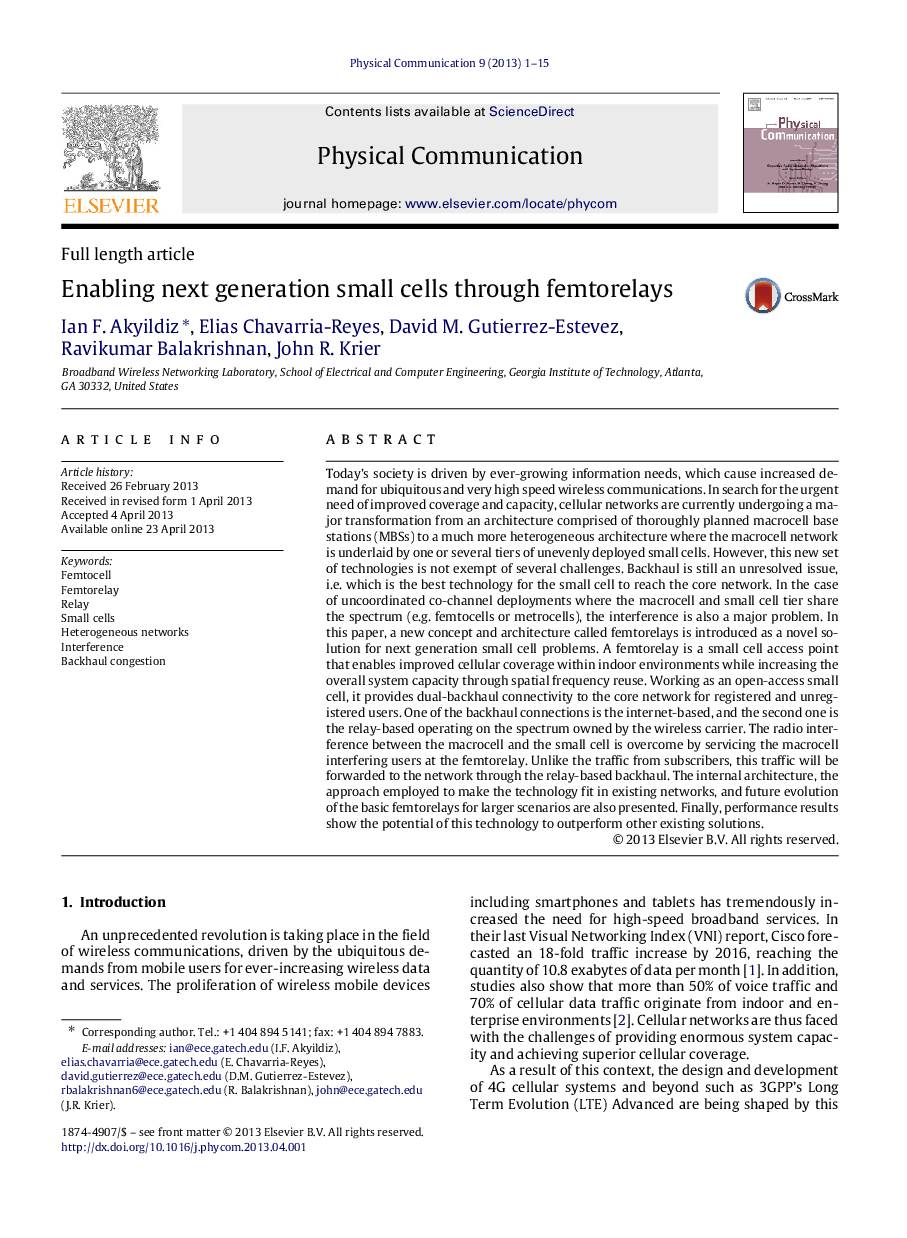| Article ID | Journal | Published Year | Pages | File Type |
|---|---|---|---|---|
| 465808 | Physical Communication | 2013 | 15 Pages |
Today’s society is driven by ever-growing information needs, which cause increased demand for ubiquitous and very high speed wireless communications. In search for the urgent need of improved coverage and capacity, cellular networks are currently undergoing a major transformation from an architecture comprised of thoroughly planned macrocell base stations (MBSs) to a much more heterogeneous architecture where the macrocell network is underlaid by one or several tiers of unevenly deployed small cells. However, this new set of technologies is not exempt of several challenges. Backhaul is still an unresolved issue, i.e. which is the best technology for the small cell to reach the core network. In the case of uncoordinated co-channel deployments where the macrocell and small cell tier share the spectrum (e.g. femtocells or metrocells), the interference is also a major problem. In this paper, a new concept and architecture called femtorelays is introduced as a novel solution for next generation small cell problems. A femtorelay is a small cell access point that enables improved cellular coverage within indoor environments while increasing the overall system capacity through spatial frequency reuse. Working as an open-access small cell, it provides dual-backhaul connectivity to the core network for registered and unregistered users. One of the backhaul connections is the internet-based, and the second one is the relay-based operating on the spectrum owned by the wireless carrier. The radio interference between the macrocell and the small cell is overcome by servicing the macrocell interfering users at the femtorelay. Unlike the traffic from subscribers, this traffic will be forwarded to the network through the relay-based backhaul. The internal architecture, the approach employed to make the technology fit in existing networks, and future evolution of the basic femtorelays for larger scenarios are also presented. Finally, performance results show the potential of this technology to outperform other existing solutions.
